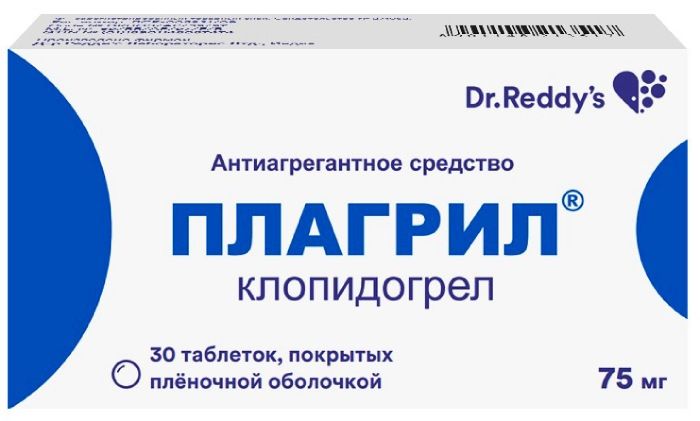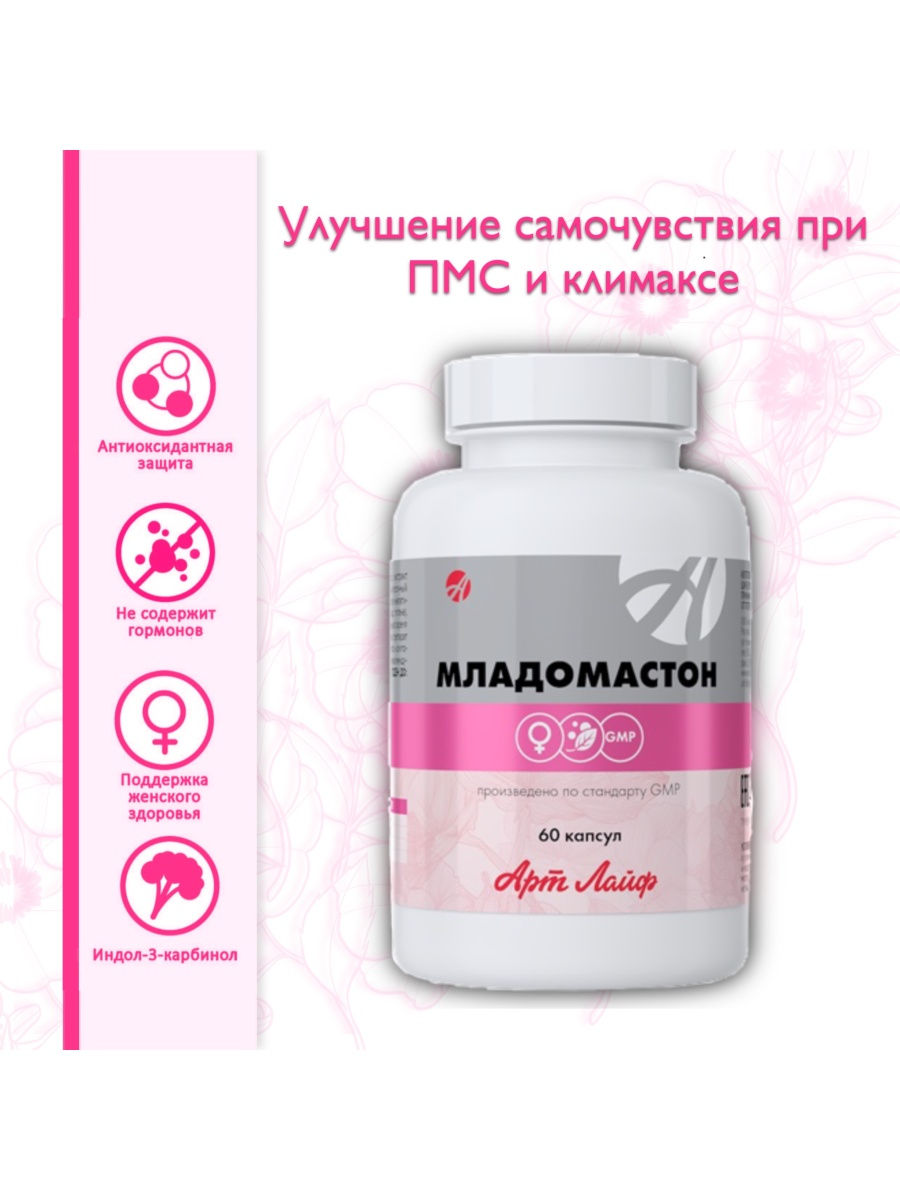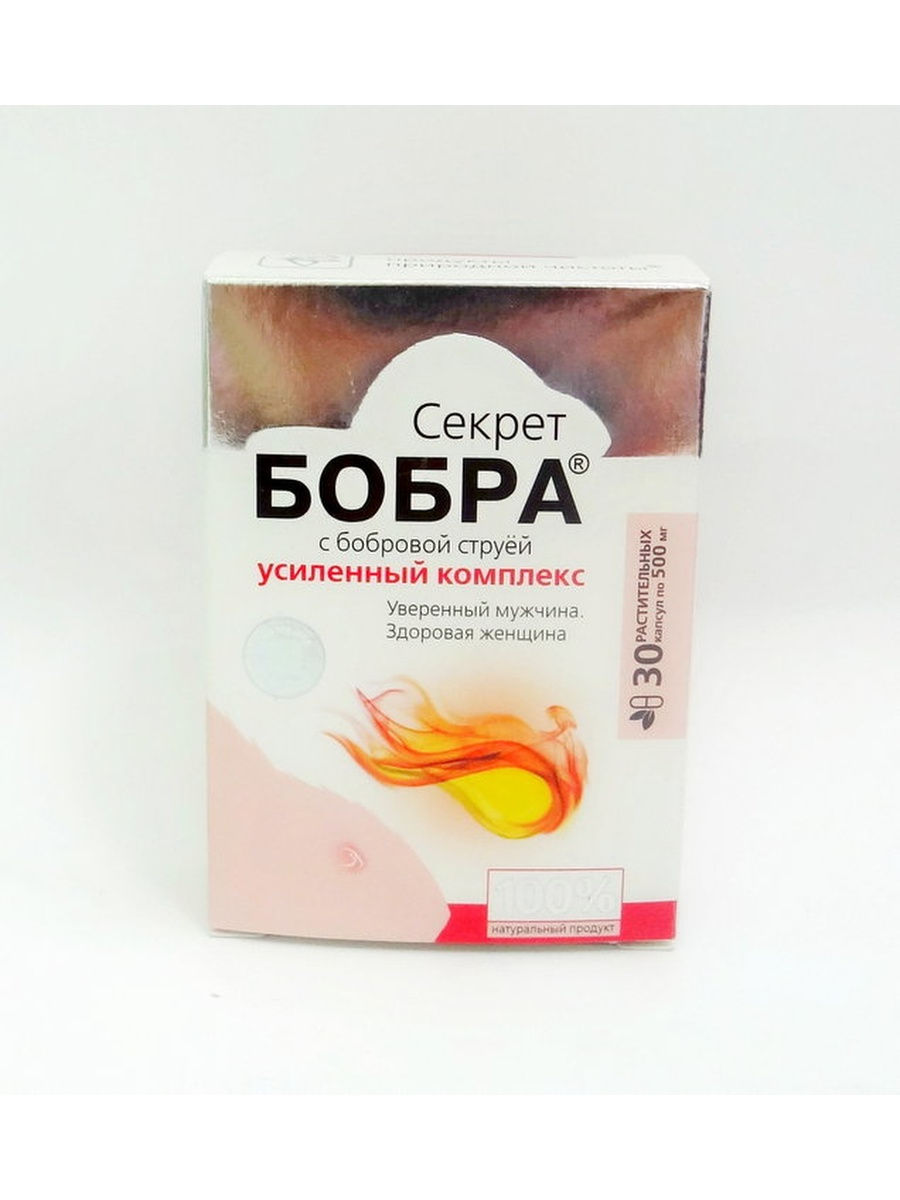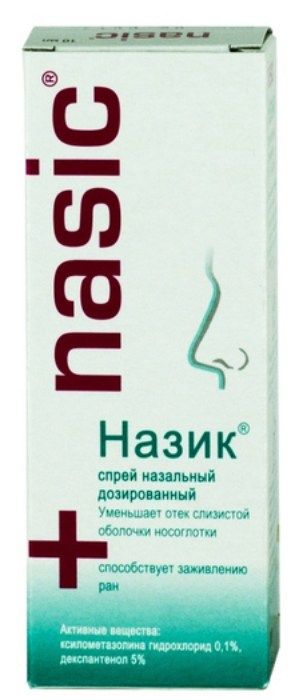- No products in the cart.
Plagril tab n / 75mg film about 30 pc
Etamsylate Injection 125mg / 2ml amp ml 10 units
$2.49
Heparin solution and / I / / n / k 5000me / ml 5ml vial 5 pcs
$15.99
$10.43
Plagril tab n / 75mg film about 30 pc
Description
Composition
Active substance:
Clopidogrel hydrogensulfate 97.875 mg, equivalent to 75 mg of clopidogrel
Excipients:
Microcrystalline cellulose (Avicel PH 112) 211.125 mg mannitol 58.0 mg croscarmellose sodium 12.0 mg Colloidal silicon dioxide 2.0 mg Magnesium stearate 4.0 mg;
sheath: Opadry Pink 03V54202 (Hypromellose 62.5%, 30.6% titanium dioxide, macrogol 400, 6.25% iron oxide red dye 0.65%) 13.475 mg.
Description:
Round, biconvex tablets, film-coated pink embossed «C 127″ on one side.
Product form:
Tablets, film-coated, 75 mg.
10 tablets in PVC / PVDC / Aluminum blister.
3 blisters with instruction for use in a cardboard pack.
Contraindications
Hypersensitivity to clopidogrel or any of the excipients of the drug.
– Severe hepatic insufficiency.
– Acute bleeding, e.g., hemorrhage from peptic ulcer or intracranial hemorrhage.
– A rare hereditary galactose intolerance, lactase deficiency and glucose-galactose malabsorption.
– Pregnancy and lactation (see section “Pregnancy and breastfeeding”.).
– Children under 18 years of age (safety and efficacy have not been established).
Carefully
At moderate hepatic failure, at which possible predisposition to bleeding (limited clinical experience).
– In renal failure (limited clinical experience).
– In diseases in which there is a predisposition to bleeding (especially gastrointestinal or intraocular), especially while the use of drugs that can cause damage to the mucous membrane of the gastrointestinal tract (such as acetylsalicylic acid [ASA] and non-steroidal antiinflammatory drugs [NSAIDs]).
– In patients who have an increased risk of bleeding: due to trauma, surgery or other pathological conditions and in patients treated with ASA, heparin, warfarin, inhibitors of glycoprotein IIb / IIIa, NSAIDs, including selective inhibitors cyclooxygenase-2 (COX-2), as well as other drugs, the use of which is associated with the risk of bleeding, selective serotonin reuptake inhibitors (SSRIs) (see. Forums “Interaction with other drugs nnym means “,” Special Instructions “).
– With simultaneous use with drugs that are substrates isoenzyme CYP2C8 (repaglinide, paclitaxel) (see “Interaction with other drugs.”).
– Patients with low activity isoenzyme CYP2C19 (see “Pharmacokinetics” section subsection “Pharmacogenetics” sections “Dosage and Administration” “Specific guidance.”).
– With a history of guidance and hematologic allergic reactions to other thienopyridines (such as ticlopidine, prasugrel) (possibility of cross-allergic and hematological reactions, see “Special instructions.”).
– If you have recently migrated transient ischemic attack or ischemic stroke (in combination with ASA, see “Special Instructions” section.).
Dosage
75 mg
Indications
Secondary prevention of atherothrombotic complications
In adult patients with myocardial infarction (a prescription from a few days up to 35 days), ischemic stroke (from 7 days prescription of up to 6 months) or diagnosed with peripheral arterial occlusive disease.
In adult patients with acute coronary syndrome:
– segment elevation ST (unstable angina or myocardial infarction without tooth Q), including patients who underwent stenting with percutaneous coronary intervention (in combination with acetylsalicylic acid);
– segment elevation ST (acute myocardial infarction) with drug treatment and the possibility of thrombolysis (in combination with acetylsalicylic acid).
Prevention of atherothrombotic and thromboembolic complications, including stroke, in atrial fibrillation (atrial fibrillation).
In patients with atrial fibrillation (atrial fibrillation), which have at least one risk factor for vascular events can not take oral anticoagulants and have a low risk of bleeding (in combination with acetylsalicylic acid).
.
Interaction with other drugs
With drugs, the use of which is associated with the risk of bleeding
There is an increased risk of bleeding due to their potential additive effect with clopidogrel. Simultaneous with clopidogrel use of drugs, use of which is associated with a risk of bleeding, should be undertaken with caution.
Since warfarin
Though clopidogrel 75 mg / day did not alter the pharmacokinetics of warfarin (substrate isoenzyme CYP2C9) or INR (international normalized ratio) in patients receiving long-term treatment with warfarin, simultaneous clopidogrel increase the risk of bleeding due to its additional independent effect on blood clotting. Therefore, care should be taken while taking warfarin and clopidogrel.
With blockers IIb / IIIa-receptor
Due to the possibility of pharmacodynamic interactions between blocker and clopidogrel IIb / IIIa-receptors, their combined use requires caution, especially in patients who have an increased risk of bleeding (with injuries and surgical interventions or other pathological conditions) [see. See “Cautions”].
With ASA
ASA does not change inhibiting ADP-induced platelet aggregation effect of clopidogrel, clopidogrel but potentiates the effect of ASA on collagen-induced platelet aggregation. However, simultaneous with clopidogrel ASA 500 mg 2 times a day during one day, did not cause a significant increase in bleeding time caused by clopidogrel. Since among clopidogrel, and ASA possible pharmacodynamic interaction, which leads to increased risk of bleeding, so their simultaneous use caution. However, in clinical studies, patients received a combination therapy with clopidogrel and ASA (75-325 mg once a day) and one year.
With heparin
According to a clinical study conducted in healthy individuals, while taking clopidogrel did not need to change the dose of heparin and did not change its anticoagulant effect. The simultaneous use of heparin did not alter the antiplatelet effect of clopidogrel. Between clopidogrel and heparin possible pharmacodynamic interactions, which may increase the risk of bleeding, so simultaneous use of clopidogrel and heparin requires caution.
With thrombolytics
Safety of combined use of clopidogrel, fibrin-fibrin-specific or non-specific thrombolytic agents and heparin was investigated in patients with acute myocardial infarction. The incidence of clinically significant bleeding were similar to that observed in the case of joint use of thrombolytic agents and heparin with ASA.
Since NSAIDs
In a clinical study conducted in healthy volunteers, the combined use of clopidogrel and naproxen increased hidden blood loss through the gastrointestinal tract. However, due to the lack of research on the interaction of clopidogrel with other NSAIDs, it is not known the time, whether there is an increased risk of gastrointestinal bleeding when taking clopidogrel with other NSAIDs. Therefore, the use of NSAIDs, including COX-2 inhibitors in combination with clopidogrel, should be done with caution (see. “Special instructions” section).
With SSRIs
Since SSRIs disrupt platelet activation and increase the risk of bleeding, the simultaneous use of SSRIs with clopidogrel should be used with caution.
On the other simultaneously conducted therapy
With strong and moderate CYP2C9 isozyme inhibitors
Since Clopidogrel is metabolized to form its active metabolite partially by isoenzyme CYP2C19, use of drugs that inhibit this isoenzyme may lead to a decrease in the formation of the active metabolite of clopidogrel. The clinical significance of this interaction is not established. As a precaution to avoid the simultaneous application of clopidogrel and strong or moderate inhibitors isoenzyme CYP2C9. Strong and moderate CYP2C9 isozyme inhibitors are omeprazole, esomeprazole, fluvoxamine, fluoxetine, moclobemide, voriconazole, fluconazole, ticlopidine, ciprofloxacin, cimetidine, carbamazepine, oxcarbazepine, chloramphenicol.
To avoid the simultaneous application of clopidogrel proton pump inhibitors, which are strong or moderate inhibitors isoenzyme CYP2C19 (e.g., omeprazole, esomeprazole) [cm. See “Pharmacokinetics”, subsection “Pharmacogenetics”, section “Special Instructions”]. If the proton pump inhibitors should be administered simultaneously with clopidogrel, should take proton pump inhibitor with the smallest isoenzyme inhibition of CYP2C19, such as pantoprazole or lansoprazole.
Several clinical studies have been conducted with clopidogrel and other simultaneously-drugs, in order to study the possible pharmacodynamic and pharmacokinetic interactions that have shown that:
– the application of clopidogrel together with atenolol, nifedipine or both of these drugs taken simultaneously, clinically significant pharmacodynamic interaction was observed;
– simultaneous administration of phenobarbital, cimetidine and estrogens had no significant effect on the pharmacodynamics of clopidogrel;
– pharmacokinetic parameters of digoxin and theophylline have not changed in their joint application with clopidogrel;
– antacids did not reduce the absorption of clopidogrel;
– phenytoin and tolbutamide can be used in conjunction with clopidogrel (research CARPIE). It is unlikely that clopidogrel may affect the metabolism of other drugs, such as phenytoin and tolbutamide and NSAIDs are metabolized via CYP2C9 isozyme family of cytochrome P450;
– ACE inhibitors, diuretics, beta-blockers, blockers “slow” calcium channel blockers, lipid-lowering agents, coronary vasodilators, hypoglycaemic agents (including insulin), antiepileptic agents, hormone replacement therapy and blockers GPIIb / IIIa-receptor: in clinical studies, there was clinically significant adverse interactions.
With drugs that are substrates for CYP2C8 isozyme
It has been shown that clopidogrel increased the systemic exposure of repaglinide in healthy volunteers. Studies in vitro have shown that increasing the systemic exposure of repaglinide is a consequence of inhibition of CYP2C8 isozyme glucuronide metabolite of clopidogrel. Caution must be exercised while the use of clopidogrel and medications, mainly are excreted from the body via metabolism by isozyme CYP2C8 (e.g., repaglinide, paclitaxel) in connection with the risk of increasing their plasma concentrations.
Overdose
Overdose clopidogrel can lead to increased bleeding time and subsequent complications in the form of bleeding.
Measures to assist in overdose
When the bleeding requires proper treatment measures. An antidote to clopidogrel is not installed. If you need a quick correction to lengthen bleeding time, it is recommended that a platelet transfusions.
pharmachologic effect
Pharmacological group:
Antiplatelet agent.
Pharmacodynamics:
Clopidogrel is a prodrug and an active metabolite which is an inhibitor of platelet aggregation. The active metabolite of clopidogrel selectively inhibits the binding of adenosine diphosphate (ADP) with P2Y12 platelet receptor and the subsequent ADP-mediated activation of GPIIb / IIIa complex, resulting in suppression of platelet aggregation. Due to the irreversible binding, platelets remain impervious to ADP stimulation throughout the remainder of their useful life (approximately 7-10 days), and the restoration of normal functions of platelets occurs at a rate corresponding to the update rate of platelets.
Platelet aggregation induced by agonists other than ADP, it was also inhibited by blocking the activation of enhanced platelet ADP releasable.
Since the formation of an active metabolite occurs by means of P450 isoenzyme system, some of which may be different or polymorphism can be inhibited by other drugs, not all patients may adequate inhibition of platelet aggregation.
With daily administration of clopidogrel at a dose of 75 mg from day reception marked significant inhibition of ADP-induced platelet aggregation is gradually increased within 3-7 days, and then goes to a constant level (when reaching equilibrium). At equilibrium, platelet aggregation is suppressed by an average of 40-60%. After cessation of clopidogrel platelet aggregation, and bleeding time gradually returned to baseline levels, on average, for 5 days.
Clopidogrel is capable of preventing development of atherothrombosis in any localizations of atherosclerotic vascular lesions, especially in patients with lesions of the cerebral, coronary or peripheral arteries.
Clinical study ACTIVE-A showed that patients with atrial fibrillation who had at least one risk factor for vascular complications, but were unable to take oral anticoagulants, clopidogrel in combination with acetylsalicylic acid (compared with the reception of only one of acetylsalicylic acid) reduced frequency of combined stroke, myocardial infarction, systemic thromboembolism is the central nervous system (CNS) or vascular death to a greater extent by reducing the risk of stroke. Efficiency of clopidogrel in combination with acetylsalicylic acid was detected early and persisted up to 5 years. Reducing the risk of major vascular events in patients treated with clopidogrel in combination with acetylsalicylic acid, it occurs mainly due to a greater reduction in stroke. The risk of stroke either gravity when receiving clopidogrel together with acetyl salicylic acid decreased, and also tended to decrease the frequency of myocardial infarction in the group treated with clopidogrel in combination with acetylsalicylic acid, but no differences in the incidence of thromboembolism is CNS or cardiovascular death. Additionally, clopidogrel in combination with acetylsalicylic acid reduces the total number of days of hospitalization for cardiovascular reasons.
Pharmacokinetics:
Suction
In single and repeated oral dose of 75 mg per day, clopidogrel is rapidly absorbed.
Mean values of maximum concentration (Cmax) of the unchanged plasma clopidogrel (approximately 2.2-2.5 ng / ml after oral administration of a single dose 75 mg) was achieved after about 45 minutes of ingestion. According to the excretion of metabolites in the urine of clopidogrel its absorption is approximately 50%.
Distribution In vitro clopidogrel and its main circulating metabolite in the blood inactive reversibly bind to plasma proteins (98% and 94% respectively), and this relationship is insatiable to a concentration of 100 mg / ml.
Metabolism
Clopidogrel is extensively metabolized in the liver. In vitro and in vivo Clopidogrel is metabolized in two ways: first, implemented via esterases, clopidogrel leads to hydrolysis to form an inactive carboxylic acid derivative (85% of circulating metabolites), and the second path by using cytochrome P450 isoenzymes. Initially Clopidogrel is metabolized to 2-oxo-clopidogrel, which is an intermediate metabolite. Subsequent metabolism of 2-oxo-clopidogrel leads to the formation of the active metabolite of clopidogrel – clopidogrel thiol derivative. In vitro this active metabolite formed mainly via isoenzyme CYP2C19, but in its formation are also involved some other isozymes, including CYP1A2, CYP2B6 and CYP3A4. The active thiol metabolite of clopidogrel, which has been isolated from in vitro studies, rapidly and irreversibly binds to receptors on platelets, thus blocking their aggregation.
The maximum concentration (Cmax) of the active metabolite of clopidogrel, after a single reception of its loading dose of 300 mg, 2 times higher than that after 4 days of a maintenance dose of 75 mg of clopidogrel. Cmax is reached within approximately
30-60 minutes.
breeding
Within 120 hours after oral administration of 14C-labeled human clopidogrel about 50% of the radioactivity excreted through the kidneys in urine and approximately 46% of the radioactivity is output through the intestine to feces. After a single oral dose of 75 mg of the half-life (T1 / 2) of clopidogrel is about 6 hours. After a single dose and repeated doses receiving clopidogrel T1 / 2 of its main circulating in the blood inactive metabolite is 8 hours.
pharmacogenetics
With CYP2C19 isozyme formed as an active metabolite or an intermediate metabolite – 2-oxo-clopidogrel. Pharmacokinetics and antiplatelet effect of clopidogrel active metabolite, when the study of platelet aggregation ex vivo, varies depending on the genotype isoenzyme CYP2C19. CYP2C19 gene allele * 1 corresponds to fully functional metabolism, whereas alleles CYP2C19 * 2 and CYP2C19 * 3 are nonfunctional. Alleles CYP2C19 * 2 and CYP2C19 * 3 are the cause of reducing the metabolism in most members Caucasian (85%) and Mongoloid races (99%). Other alleles, to which a lack or reduction of metabolism are less frequent and include, but are not limited to gene alleles of CYP2C19 * 4, * 5, * 6, * 7, and * 8. Patients with low activity of CYP2C19 isozyme should possess the above two alleles with loss of function. Опубликованные частоты встречаемости фенотипов лиц с низкой активностью изофермента CYP2C19 составляют у лиц европеоидной расы 2 %, у лиц негроидной расы 4 % и у китайцев 14 %. Существуют специальные тесты для определения имеющегося у пациента генотипа изофермента CYP2C19.
По данным перекрестного исследования (40 добровольцев), в которое вошли лица с очень высокой, высокой, промежуточной и низкой активностью изофермента CYP2C19, каких-либо существенных различий в экспозиции активного метаболита и в средних значениях ингибирования агрегации тромбоцитов (ИАТ), индуцированной АДФ, у добровольцев с очень высокой, высокой и промежуточной активностью изофермента CYP2C19 не выявлено. У добровольцев с низкой активностью изофермента CYP2C19 экспозиция активного метаболита снижалась на 63-71%, по сравнению с лицами с высокой активностью изофермента CYP2C19.
При использовании схемы лечения 300 мг нагрузочная доза / 75 мг поддерживающая доза (300 мг/75 мг) у добровольцев с низкой активностью изофермента CYP2C19 антитромбоцитарное действие снижалось со средними значениями ИАТ, составляющими 24 % (через 24 ч) и 37 % (на 5 день лечения), по сравнению с ИАТ, составляющими 39 % (через 24 ч) и 58 % (на 5 день лечения) у добровольцев с высокой активностью изофермента CYP2C19 и 37 % (через 24 ч) и 60 % (на 5 день лечения) у добровольцев с промежуточной активностью изофермента CYP2C19.
Когда добровольцы с низкой активностью изофермента CYP2C19 получали схему лечения 600 мг нагрузочная доза / 150 мг поддерживающая доза (600 мг/150 мг), экспозиция активного метаболита была выше, чем при приеме схемы лечения 300 мг/75 мг. Кроме этого, ИАТ составляло 32 % (через 24 ч) и 61 % (на 5 день лечения), что было больше такового у лиц с низкой активностью изофермента CYP2C19, получавших схему лечения 300 мг/75 мг, и было подобно таковому в группах пациентов с более высокой интенсивностью CYP2C19-метаболизма, получавших схему лечения 300 мг/75 мг. Однако, в исследованиях с учетом клинических исходов режим дозирования клопидогрела для пациентов этой группы (пациентов с низкой активностью изофермента CYP2C19) пока не установлен.
Аналогично результатам данного исследования мета-анализ шести исследований, в который вошли данные 335 добровольцев, получавших клопидогрел и находившихся в состоянии достижения равновесной концентрации, показал, что по сравнению с добровольцами с высокой активностью изофермента CYP2C19, у добровольцев с промежуточной активностью изофермента CYP2C19 экспозиция активного метаболита снижалась на 28 %, а у добровольцев с низкой активностью изофермента CYP2C19 – на 72 %, в то время как ИАТ было снижено с различиями в ИАТ, составляющими 5,9 и 21,4 % соответственно.
Не проводилось оценки влияния генотипа CYP2C19 на клинические исходы у пациентов, получавших клопидогрел, в проспективных, рандомизированных, контролируемых исследованиях. Однако на настоящий момент имеется несколько ретроспективных анализов. Результаты генотипирования имеются в следующих клинических исследованиях: CURE, CHARISMA, CLARITY-TIMI 28, TRITON-TIMI 38 и ACTIVE-A, a также в нескольких опубликованных когортных исследованиях.
В исследовании TRITON-TIMI 38 и 3-х когортных исследованиях (Collet, Sibbing, Giusti) пациенты комбинированной группы с промежуточной или низкой активностью изофермента CYP2C19 имели более высокую частоту сердечно-сосудистых осложнений (смерть, инфаркт миокарда и инсульт) или тромбоза стента, по сравнению с пациентами с высокой активностью изофермента CYP2C19.
В исследовании CHARISMA и одном когортном исследовании (Simon) увеличение частоты сердечно-сосудистых осложнений наблюдалось только у пациентов с низкой активностью изофермента CYP2C19 (при их сравнении с пациентами с высокой активностью изофермента CYP2C19).
В исследованиях CURE, CLARITY, ACTIVE-A и одном из когортных исследований (Trenk) не наблюдалось увеличение частоты сердечно-сосудистых осложнений в зависимости от интенсивности CYP2C19-метаболизма.
Separate groups of patients
Фармакокинетика активного метаболита клопидогрела в этих группах не изучалась.
Elderly patients
У добровольцев пожилого возраста (старше 75 лет) при сравнении с молодыми добровольцами не выявлено различий по показателям агрегации тромбоцитов и времени кровотечения. Коррекция дозы у лиц пожилого возраста не требуется.
Children
Data not available.
Patients with impaired renal function
После повторных приемов клопидогрела в дозе 75 мг/сут у пациентов с тяжелыми нарушениями функции почек (клиренс креатинина от 5 мл/мин до 15 мл/мин) ингибирование
АДФ-индуцированной агрегации тромбоцитов было ниже (на 25 %), по сравнению с таковым у здоровых добровольцев, однако удлинение времени кровотечения было подобным таковому у здоровых добровольцев, получавших клопидогрел в дозе 75 мг в сутки.
Patients with impaired liver function
После десятидневного приема клопидогрела ежедневно в суточной дозе 75 мг у пациентов с тяжелыми нарушениями функции печени ингибирование АДФ-индуцированной агрегации тромбоцитов было подобным таковому у здоровых добровольцев. The mean bleeding time was also comparable in both groups.
Расовая принадлежность
Распространенность аллелей генов изофермента CYP2C19, обуславливающих промежуточную и низкую активность этого изофермента, отличается у представителей различных расовых групп. Имеются ограниченные литературные данные об их распространенности у представителей монголоидной расы, что не позволяет оценить у них значение генотипирования изофермента CYP2C19 для развития ишемических осложнений..
Pregnancy and breast-feeding
Pregnancy
Исследования на животных не выявили ни прямых, ни непрямых неблагоприятных эффектов на течение беременности, эмбриональное развитие, роды и постнатальное развитие. Так как не всегда по результатам исследований на животных можно предсказать реакцию у человека, и вследствие отсутствия данных контролируемых клинических исследований по приему клопидогрела беременными женщинами, в качестве меры предосторожности не рекомендуется прием клопидогрела во время беременности, за исключением тех случаев, когда, по мнению врача, его применение настоятельно необходимо.
Breastfeeding
В исследованиях на крысах было показано, что клопидогрел и/или его метаболиты экскретируются в грудное молоко. Проникает ли клопидогрел в грудное молоко человека – неизвестно. Так как многие лекарственные средства могут экскретироваться в грудное молоко и оказывать неблагоприятное воздействие на грудного ребенка, то лечащий врач, исходя из важности приема препарата Плагрил® для матери, должен рекомендовать ей или прекратить прием препарата, или принимать препарат, но отказаться от грудного вскармливания.
Conditions of supply of pharmacies
On prescription.
side effects
The data obtained in clinical trials
Безопасность клопидогрела изучена более чем у 44000 пациентов, в том числе более чем у 12000 пациентов получавших лечение в течение года или более. В целом, переносимость клопидогрела в дозе 75 мг/сутки в исследовании CAPRIE соответствовала переносимости АСК в дозе 325 мг/сутки, независимо от возраста, пола и расовой принадлежности пациентов. Ниже перечислены клинически значимые нежелательные эффекты, наблюдавшиеся в пяти больших клинических исследованиях: CAPRIE, CURE, CLARITY, COMMIT и ACTIVE-A.
Кровотечения и кровоизлияния
Сравнение монотерапии клопидогрелом и АСК
В клиническом исследовании CAPRIE общая частота всех кровотечений у пациентов, принимавших клопидогрел, и у пациентов, принимавших АСК, составила 9,3 %. Частота тяжелых кровотечений при применении клопидогрела и АСК была сопоставимой: 1,4 % и 1,6 %, соответственно.
В целом, частота развития желудочно-кишечных кровотечений у пациентов, принимавших клопидогрел, и у пациентов, принимавших АСК, составляла 2,0 % и 2,7 %, соответственно, в том числе частота желудочно-кишечных кровотечений, потребовавших госпитализации, составляла 0,7 % и 1,1 %, соответственно.
Общая частота кровотечений другой локализации при приеме клопидогрела по сравнению с приемом АСК была выше (7,3 % против 6,5 %, соответственно).
Однако частота тяжелых кровотечений при применении клопидогрела и АСК была сопоставимой (0,6 % или 0,4 %, соответственно). Наиболее часто сообщалось о развитии следующих кровотечений: пурпура/кровоподтеки, носовое кровотечение. Реже сообщалось о развитии гематом, гематурии и глазных кровоизлияний (главным образом, конъюнктивальных).
Частота внутричерепных кровоизлияний при применении клопидогрела и АСК была сопоставимой (0,4 % или 0,5 %, соответственно).
Сравнение комбинированной терапии клопидогрел + АСК и плацебо + АСК
В клиническом исследовании CURE у пациентов, принимавших клопидогрел + АСК, по сравнению с пациентами, принимавшими плацебо + АСК, наблюдалось увеличение частоты развития больших кровотечений (3,7 % против 2,7 %) и малых кровотечений (5,1 % против
2,4 %). В основном, источниками больших кровотечений являлись желудочно-кишечный тракт и места пункции артерий.
Частота развития угрожающих жизни кровотечений у пациентов принимавших клопидогрел + АСК, по сравнению с пациентами, принимавшими плацебо + АСК, достоверно не различалась (2,2 % и 1,8 %, соответственно), частота развития фатальных кровотечений была одинаковой (0,2 % при обоих видах терапии).
Частота возникновения не угрожающих жизни больших кровотечений была достоверно выше у пациентов принимавших клопидогрел + АСК, по сравнению с пациентами принимавшими плацебо + АСК (1,6 % и 1 %, соответственно), но частота развития внутричерепных кровоизлияний была одинаковой (0,1 % при обоих видах терапии).
Частота развития больших кровотечений в группе клопидогрел + АСК зависела от дозы АСК (
special instructions
При лечении клопидогрелом, особенно в течение первых недель лечения и/или после инвазивных кардиологических процедур/хирургического вмешательства, необходимо вести тщательное наблюдение за пациентами на предмет исключения признаков кровотечения, в том числе и скрытого.
В связи с риском развития кровотечения и нежелательных эффектов со стороны крови (см. раздел «Побочное действие») в случае появления в ходе лечения клинических симптомов, подозрительных на возникновение кровотечения, следует срочно сделать общий клинический анализ крови, определить активированное частичное тромбопластиновое время (АЧТВ), количество тромбоцитов, показатели функциональной активности тромбоцитов и провести другие необходимые исследования.
Клопидогрел, так же как и другие антитромбоцитарные средства, следует применять с осторожностью у пациентов, имеющих повышенный риск развития кровотечения, связанный с травмами, хирургическими вмешательствами или другими патологическими состояниями, а также у пациентов, принимающих АСК, НПВП, в том числе ингибиторы ЦОГ-2, гепарин или ингибиторы гликопротеина IIb/IIIа.
Совместное применение клопидогрела с варфарином может усилить риск кровотечения (см. раздел «Взаимодействие с другими лекарственными средствами»), поэтому следует соблюдать осторожность при совместном применении клопидогрела и варфарина.
Если пациенту предстоит плановая хирургическая операция и при этом нет необходимости в антитромбоцитарном эффекте, то за 5-7 дней до операции прием клопидогрела следует прекратить.
Клопидогрел удлиняет время кровотечения и должен применяться с осторожностью у пациентов с заболеваниями, предрасполагающими к развитию кровотечений (особенно желудочно-кишечных и внутриглазных). Препараты, которые могут вызывать повреждения слизистой оболочки ЖКТ (такие как АСК, НПВП) у пациентов, принимающих клопидогрел, следует применять с осторожностью.
Пациенты должны быть предупреждены о том, что при приеме клопидогрела (одного или в комбинации с АСК) для остановки кровотечения может потребоваться больше времени, а также о том, что в случае возникновения у них необычного (по локализации или продолжительности) кровотечения, следует сообщить об этом своему лечащему врачу. Перед любой предстоящей операцией и перед началом приема любого нового лекарственного препарата пациенты должны сообщать врачу (включая стоматолога) о приеме клопидогрела.
Очень редко после применения клопидогрела (иногда даже непродолжительного) отмечались случаи развития ТТП, которая характеризуется тромбоцитопенией и микроангиопатической гемолитической анемией, сопровождающимися неврологическими расстройствами, нарушением функции почек и лихорадкой. ТТП является потенциально угрожающим жизни состоянием, требующим немедленного лечения, включая плазмаферез.
Было показано, что у пациентов с недавно перенесенным преходящим нарушением мозгового кровообращения или инсультом, имеющих высокий риск развития повторных ишемических осложнений, комбинация АСК и клопидогрела повышает риск развития больших кровотечений. Поэтому такая комбинированная терапия должна проводиться с осторожностью и только в случае клинической доказанности преимущества от ее применения.
Сообщалось о случаях развития приобретенной гемофилии при приеме клопидогрела. При подтвержденном изолированном увеличении АЧТВ, сопровождающемся или не сопровождающемся развитием кровотечения, следует рассмотреть вопрос о возможности развития приобретенной гемофилии. Пациенты с подтвержденным диагнозом приобретенной гемофилии должны наблюдаться и лечиться специалистами по этому заболеванию и прекратить прием клопидогрела.
У пациентов с низкой активностью изофермента CYP2C19 при применении клопидогрела в рекомендуемых дозах образуется меньше активного метаболита клопидогрела и слабее выражено его антиагрегантное действие, в связи с чем при приеме обычно рекомендуемых доз клопидогрела при остром коронарным синдроме или чрескожном коронарном вмешательстве возможна более высокая частота развития сердечно-сосудистых осложнений, чем у пациентов с нормальной активностью изофермента CYP2C19. Имеются тесты для определения генотипа CYP2C19. Эти тесты могут быть использованы для помощи в выборе терапевтической стратегии. Рассматривается вопрос о применении более высоких доз клопидогрела у пациентов с низкой активностью CYP2C19 (см. раздел «Фармакокинетика», подраздел «Фармакогенетика», разделы «С осторожностью», «Способ применения и дозы»).
У пациентов следует собирать анамнез на предмет имевшихся ранее аллергических и/или гематологических реакций на другие тиенопиридины (такие как тиклопидин, прасугрел), так как сообщалось о наличии перекрестных аллергических и/или гематологических реакций между тиенопиридинами (см. раздел «Побочное действие»).
Тиенопиридины могут вызывать умеренные и тяжелые аллергические реакции (такие как сыпь, ангионевротический отек) или гема
Additional information
| Weight | 0.100 kg |
|---|---|
| Manufacturer | DR.REDDIS |












There are no reviews yet.